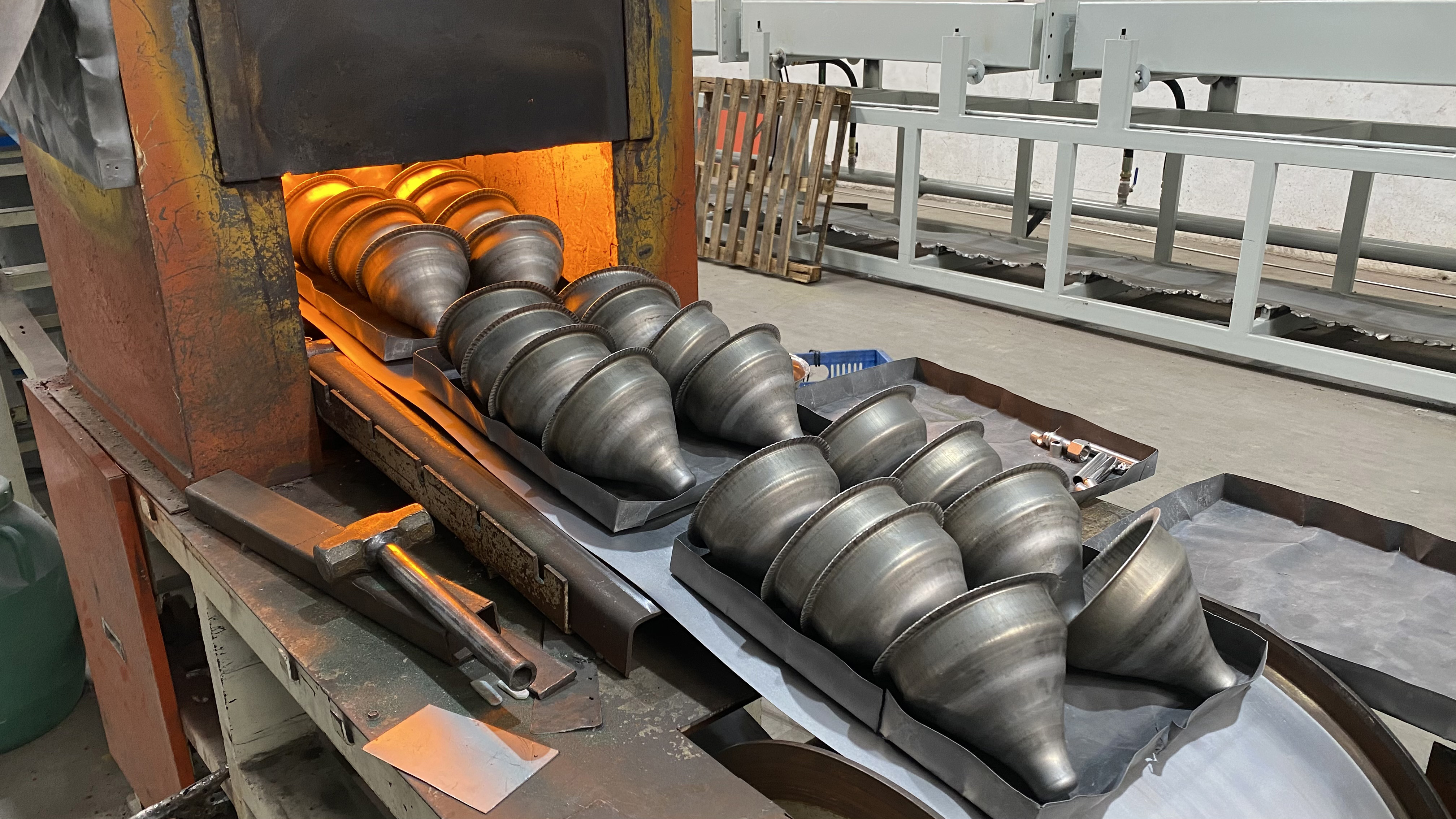What heat treatments are required for metal spun parts
May. 28, 2025
Metal spun parts may need to undergo various heat treatments, depending on the material type, performance requirements, and application scenarios. Here is a detailed introduction:
Annealing Treatment
Purpose: To reduce the hardness of spun parts, improve their plasticity and toughness, eliminate work hardening and residual stresses generated during the spinning process, make the material's structure more uniform, and enhance subsequent machinability.
Applicable Situations: For metal materials with relatively high hardness and poor plasticity, such as stainless steel and titanium alloy spun parts, annealing is usually necessary after spinning. For example, after annealing, the hardness and strength of stainless steel spun parts will decrease, but their plasticity and corrosion resistance will improve, facilitating subsequent bending, stamping, and other machining operations.
Quenching Treatment
Purpose: To heat metal spun parts above the critical temperature, hold them at that temperature for a certain period, and then rapidly cool them to increase their hardness and strength. Quenching can transform the metal's structure into hard phases such as martensite, thereby significantly improving the material's mechanical properties.
Applicable Situations: It is commonly used for spun parts requiring high hardness and strength, such as some tools, molds, and mechanical parts subjected to high stresses. For instance, after quenching, the hardness of high-speed steel spun parts can exceed HRC60, meeting the requirements of high-speed cutting and other working conditions.
Tempering Treatment
Purpose: Conducted after quenching, it involves heating the metal spun parts to a certain temperature range below the critical temperature, holding them there for a specified time, and then cooling them to eliminate internal stresses generated during quenching, stabilize the structure, and adjust hardness and toughness. Tempering enables quenched metal spun parts to achieve good comprehensive mechanical properties.
Applicable Situations: Almost all metal spun parts that have undergone quenching require tempering. For example, carbon steel spun parts have high hardness but great brittleness after quenching. Tempering can reduce brittleness, improve toughness and strength, enabling them to have better service performance while meeting hardness requirements.
Aging Treatment
Purpose: For metal spun parts used under high-temperature or high-stress conditions, aging treatment can enhance their dimensional stability and creep resistance. By holding the parts at a specific temperature for a long time, the atomic diffusion and phase transformation processes within the metal are allowed to proceed fully, thereby stabilizing the structural organization.
Applicable Situations: It is commonly used for light metal spining parts such as aluminum alloys and magnesium alloys, as well as some components operating in high-temperature environments. For example, aluminum alloy spun parts in aircraft engines, after aging treatment, can maintain good mechanical properties and dimensional accuracy at high temperatures.










